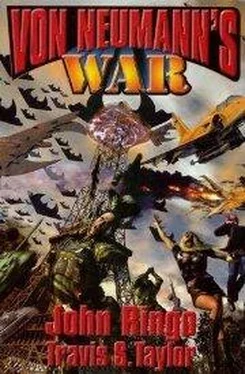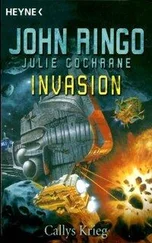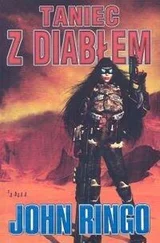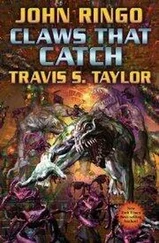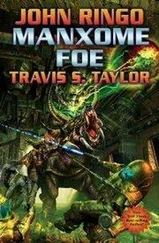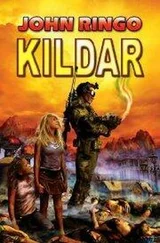* * *
Dr. Tom Powell, Alan Davis, and Dr. Reynolds stood on the stage of the stadium-seating-style auditorium as the final attendees of the meeting filtered into the seats in the upper rows. Armed security guards stepped into the room at each door and pulled the doors closed behind them. Roger nodded to Tom and Alan and the two of them left the stage and sat down in the first row.
“Thank all y’all for coming today. I see a lot of familiar faces here and a few I don’t recognize. For those of you I haven’t met before, I’m Dr. Roger Reynolds with the local space group office for Space Defense Systems Research, Incorporated. What I would like for everybody to do first is to read the form on the cover of the sealed folders in front of you. Take five minutes and read the nondisclosure agreement carefully and, if you agree to it, sign it.” Roger stood at the podium patiently for five minutes.
“Now, if anybody did not sign the form in front of you please leave now.”
Nobody stood up.
“Okay, from this point on every person present in this room has indicated that they have signed the documents,” Roger said. “It, legally, doesn’t matter if you have or not; you’re now covered by the security regulations of those documents and the penalties laid out for failure to comply with the security requirements. Very well, open the folders and turn to the first page. Let’s have the first slide on the screen please.
“So here is an overview of what we plan to put together in less than five months.” Roger cleared his throat as the first PowerPoint slide, a picture of a satellite, appeared on the multiple big screens behind him.
“The reason you are all here is that Mars is being changed by something unnatural. Its surface reflectance albedo has been changed enough so that in the past year these changes can now be detected via small commercial telescopes. We have no idea what is causing this phenomenon, but we suspect that it’s not a natural occurrence,” Roger emphasized.
“Our purpose here is to find out what is going on there and to find out fast . We can speculate all we want, but without recon intel we have no means of truly knowing what’s going on there.” Roger paused and cleared his throat and scanned the darkened auditorium for reactions. The reactions from most of the room were guarded.
“So, from this slide and from the documents you just signed we see that this information is classified and compartmented. The mission will be referred to from here on as Top Secret codename Neighborhood Watch and our bird will be called Percival, for Percival Lowell who first searched for signs of extraterrestrial life on Mars. I needn’t remind y’all of the rules here for compartmented programs. If there are security questions, we’ll have the special security officer available after the briefing.
“With the basic stuff now out of the way, let’s talk about how we’ll do this mission. Each of you here was chosen for your particular talents involved in either spacecraft design or rapid and large-scale systems engineering and integration. You may or may not be the best in the world at your specific talent, but you are good or you wouldn’t be here — the time pressure of our situation also indicates that you were available and perhaps others were not. I mention this for a reason. You are the folks who will do this job. Whether you are the best person for it or not in somebody’s mind, or your own, doesn’t matter. You’re here; it’s your job.
“Each of you will be the team leader for a subsystem or mission task and your particular assignment as we see it now is listed in your specific briefing folder in front of you. You can also see your names listed in front of the headings in the work breakdown structure for each element of the WBS. It will be up to you to put your team together. We’ll discuss the aspects of that later this afternoon. For now let’s talk about the mission.
“Starting with the project timeline first, I’ll go over the rough draft we have put together thus far. Feel free to jump in here and offer input whenever you think of it.” Roger glanced around the room.
“We’ll talk pre-launch activities first.” Roger picked up the laser pointer and slide changer from the podium and began to pace the stage slowly. “Prior to launch, the mission team will be busy planning the aspects of the mission timeline, conducting numerous hardware and software science readiness reviews, preliminary design reviews, and critical design reviews, which will lead to building the spacecraft and its instruments, and finally delivering the spacecraft to the Cape for system integration into the launch vehicle, then launch. During the design and build portion of the pre-launch efforts let’s try to make use of as many commercial and government off-the-shelf items as possible. COTS and GOTS might help us reduce our build time.
“The next phase is launch. Our launch phase begins, as you can see from this next slide, once Percival transfers from external power to the internal power on the launch pad. This phase will last until the spacecraft is declared stable, healthy, and ready to accept control commands.
“Percival will launch in August — that’s right, your ears aren’t deceiving you, that’s four and a half months away, folks — from Space Launch Complex 37 at the Cape Canaveral Air Force Station. We’re fortunate in that our launch window occurs within Earth’s northern summer and that Mars is not that far away at launch date. The spacecraft will use a Boeing Delta IV Heavy with eight solid strap-on boosters. Dr. Tom Powell will discuss the throw weight and trajectories in a splinter working group later.” Roger pointed to Tom sitting in the front row. Tom stood and waved in acknowledgement.
“Uh, excuse me?” a man in the audience said, raising his hand. He was clean cut and wearing a jacket and tie, in comparison to some of the engineers present who had turned up in polo shirts bearing the names of their firms. The guy was definitely “big corporate” and Roger made a guess at his identity right away.
“Yes?” Roger paused.
“I’m Dr. John Fisher with Lockheed Martin. Did you say a Delta IV Heavy , common booster core, with eight solid strap-ons?”
“That’s correct,” Roger nodded.
“Uh, that’s never been done before, to my knowledge,” Dr. Fisher said. “Can that be done? I mean, structurally speaking, can you stick eight strap-ons onto the common booster core tubes?”
“If you’ll read your spot on the work breakdown structure, Dr. Fisher,” Roger said, smiling just a bit, “you will see that it’s your job to figure that out. It has to be done, therefore it will be done.”
“I, uh…” For some reason, Dr. Fisher’s face seemed pale.
“If nuthin’ else, thar’s always Bondo an’ duct tape,” Roger said in his deepest, slowest, drawl, eliciting chuckles from some of the people who knew him and a suddenly firmer demeanor from Fisher.
Fisher was one of the men in the room who had been carefully chosen. In his early forties, he was from Denver and had been a rocket systems engineer his entire career with Lockheed Martin. Despite his “corporate button-down” looks, he was a noted outside-the-box thinker and damned fine engineer. One of the things Roger had heard about him that he liked was that Fisher was a “tinkerer” at home as well as at work. Get him in a lab and the suit came off, the well pressed lab-coat came on and he started making things. He was even a skilled machinist, having simply picked it up over the years. If anyone could figure out how to get three CBC tubes linked together with eight strap-ons, then boosting, it would be John Fisher.
Читать дальше
